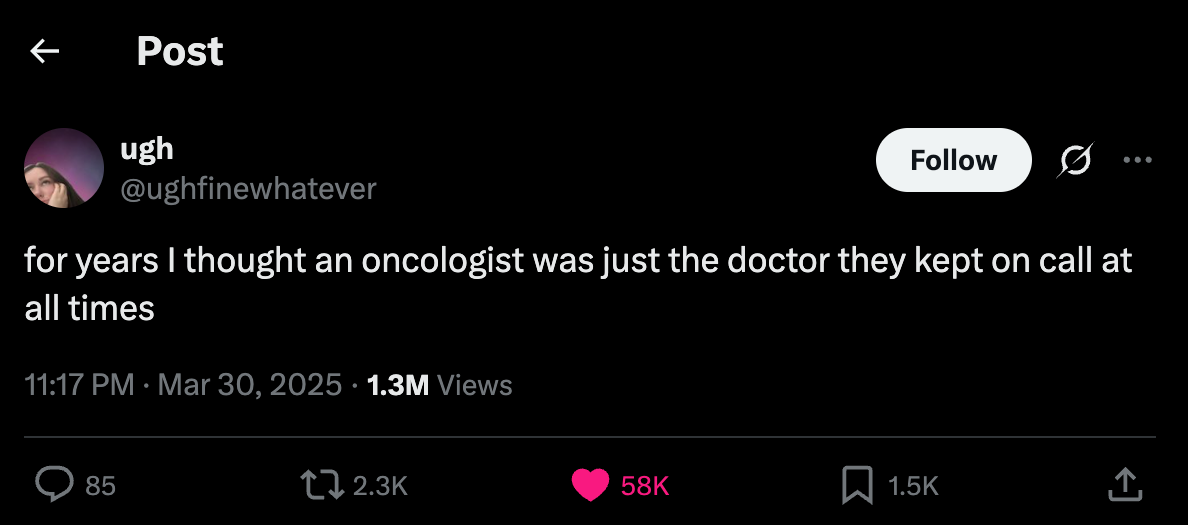This payment model makes doctors drug dealers
buy-and-bill is drug distribution for control freaks
Why can you pick up some drugs from a pharmacy and take them in the privacy of your home, but doctors/nurses have to give you other drugs? I’m not the only one who cares. How am I so sure? A former Investor Relations colleague once scheduled time with me for a crash course on the US health system and asked that I focus on buy-and-bill. This one is for anyone who wants to know more about US drug delivery and for those of us who buy our meds in the US.
Some drugs are not like other drugs, they’re special
Most oral pills and self-injected medications like Ozempic are simple to store and use. You pop a pill with or without food (read that label, girl!), chug some water, and move on. In the US, your pharmacy will either bill you or the insurer paying for your Pharmacy Benefits. Let’s call this the bill-and-dispense model. Often, these are pharmacy benefit managers like CVS Caremark or Cigna Express Scripts that want you to get their preferred formulary drugs from their preferred pharmacies. If you’re 65+, this is Medicare Part D. The D is for drugs.
Other medicines call for expertise from specialists like oncologists, rheumatologists, neurologists, dermatologists AKA cancer doctors, inflammatory disease doctors, brain doctors, and skin doctors. I’m spelling it out because this tweet went viral this week and I want us to be on the same page:
This matters because we’ve seen a shift from small-molecule drugs to oncology and rare disease biologics, a trend likely to grow with the Inflation Reduction Act. Complex drugs like Monoclonal Antibodies (mAbs) and their younger, more toxic, cousins Antibody Drug Conjugates (ADCs) need special handling. Healthcare providers personally administer specialty drugs to ensure quality control! Safety! Efficacy! This is because most oncology and other specialty drugs have precise storage requirements and must be given at exact doses and intervals with real-time patient monitoring to catch any bad reactions. Examples include: chemotherapy drugs, IV infusion therapies like Keytruda (Merck), and specialty injections like Ilumya (Sun Pharma of plaque psoriasis fame).
When your doctor or their clinical staff gives you a drug in their office, she/her practice has already paid pharma wholesalers/manufacturers for that drug up-front (buy). Then, she bills your medical benefits payer for both her service (administration) and the drug (bill). That’s why it’s called “buy-and-bill.” Billing this way helps clinicians offset the cost of administration, storage, and inventory control. If you’re 65+, this is charged to Medicare Part B and is exempt from typical formulary IN/OUT lists. With the “ASP + 6%” rule, Medicare pays the clinician back for the Average Sales Price of the drug, then adds 6% to cover overhead costs.
To put this into perspective, consider your local Bushwick Art Boy at La Cantine who still uses his parents’ credit card as a a buy-and-bill analogy. La Cantine buys coffee beans from La Colombe, sources seasonal ingredients from local farms, and keeps them stocked. He walks in, grabs a table, and orders his usual: a cortado and Poblano egg and cheese to stay. Once he’s done, the cafe bills his parents (insurance), who cover the cost, for the ingredients + service charge. This is like buy-and-bill: the cafe buys the beans and food upfront, then charges his parents’ credit card. If we wanted to look at pharmacy dispensing, it would be akin to pre-ordering/pre-paying coffee on the Starbucks Mobile App and picking it up when it’s ready.
Drug delivery for control freaks
So we know buy-and-bill allows for better drug quality control/integrity and administration. What are the other benefits?
Drug Selection: Healthcare providers can recommend the best course of care/treatment based on patient needs, clinical presentation, and insurance coverage.
Cost control: Providers get better control over the prices of drugs they give you. Buy-and-bill drugs may have lower patient cost-sharing since they’re not subject to typical formulary restrictions.
Better access to quality care: Patients in rural areas may have better access to high-quality medicines when their clinicians stock these medicines vs relying on specialty pharmacies.
Physician profit margins: Because they’re paid for both the drug and administration, clinicians earn more with this model.
Why does buy-and-bill have haters?
No drug distribution model is perfect—what are some concerns?
Misguided incentives: Critics say buy-and-bill encourages clinicians to prescribe more expensive medications.
Risky Business: Providers pay upfront for costly drugs, then wait for insurers to reimburse them. This is a higher financial risk as clinicians eat the cost if insurance denies payment.
Inflated costs:
Site of administration: Where you get your drug matters. Hospital-affiliated outpatient clinics sometimes bill up to 100% more versus office-based practices. Legislators are hoping to address this through site-neutral policies.
Exploiting the 340B Program: The 340B drug discount program is a 90s girl, introduced so patients could access affordable drugs. The idea is that nonprofit hospitals and clinics that treat low-income patients for free (or at low costs) are community safety nets. 340b clinics/hospitals get deep discounts from pharmaceutical companies. Things get messy because 340b sites will still charge insurers/Medicare the full list price under buy-and-bill and pocket the difference.
It’s a mixed bag
Buy-and-bill is the most common drug distribution model for provider-delivered treatments. But payers + politicians increasingly prefer cheaper drug distribution and reimbursement models. Ultimately, it’s still about who gets control and who gets paid.
The most common alternatives shift payment away from healthcare providers to specialty pharmacies:
White bagging: A specialty pharmacy (often selected by the payer/in-network) ships the prescription to your healthcare provider, who stores it until it’s time to treat you with the drug in their office or clinic. Insurers love this option, especially when they also own specialty pharmacies ;)
Brown bagging: Mimics the traditional pharmacy model, where you can either pick up your drugs at the pharmacy or get them mailed to your home, then “brown-bag” them à la school lunch to your healthcare provider for administration.
I don’t think anyone actually likes this option. There’s no way to know how we (the patients) handle drugs before taking them to our doctors. What if I left it in my car in San Fernando Valley 100F heat? Even over-the-counter drugs face this issue. Look no further than benzoyl peroxide acne medications that can degrade into benzene (a known carcinogen) in extreme heat.
Clear bagging: A fun third thing, where your provider’s in-house specialty pharmacy prepares and dispenses your drugs and walks them over to your physician for administration
Buy-and-bill faces headwinds
What can we expect in the drug distribution space?
Legislation: Many states have introduced legislation to address some of these concerns. Some, like Delaware and Ohio, block brown and white bagging practices. Other states, like Rhode Island, are trying to protect patients by limiting and regulating “white bagging.” Further, Congress and the FTC are exploring PBM regulation and the Inflation Reduction Act of 2022 includes updates to how Medicare pays for these drugs.
Market Consolidation: I’m a big fan of fellow healthcare blogger Adam J. Fein, PhD of Drug Channels Institute. He’s the only person I know flagging this upcoming trend: all signs point to wholesalers paying to play in the oncology buy-and-bill profits sandbox. Anticipating patent expiration for biologics, major wholesalers like McKesson, Cardinal Health, and Cencora bought up generics/biosimilars (generics for biologics) organizations, oncology group purchasing organizations, and provider groups. They’ve built this brick-by-brick with a little help from private equity.
Until next time.
xxsem


